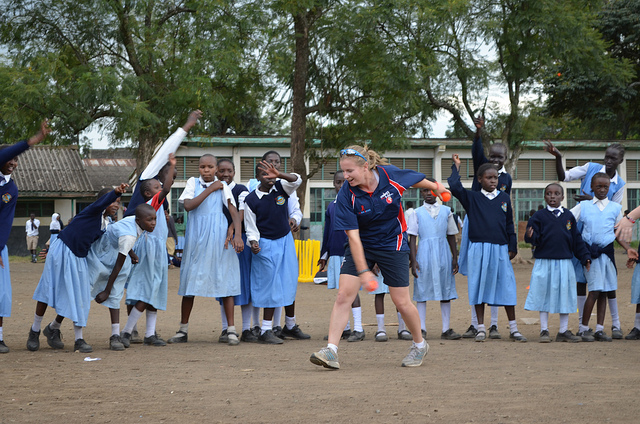
Key points from the UNAIDS 2012 report
'AIDS is not over' – the key points from the UNAIDS 2012 report
The latest in the United Nations' annual reports on the state of AIDS across the globe reveals that the efforts to eradicate the disease are progressing, but simultaneously also shows that in many countries people living with HIV still face stigma, discrimination and injustice. There is still much to be done.
One point highlighted throughout the report is that gender inequality and sexual violence is still widespread. However, encouragingly one of the targets UNAIDS has articulated for 2015 to guide collective actions is;
'Eliminate gender inequalities and gender-based abuse and violence and increase the capacity of women and girls to protect themselves from HIV.'
This illustrates the importance of reaching both boys and girls early to reinforce the message of gender equality, something Cricket Without Boundaries strives to do when coaching.

The report does show some progress, as new infection rates have fallen by 50% in 25 countries, including 25% drop in people being infected in Sub Saharan Africa when compared to 2001. Out of the CWB countries, Botswana and Rwanda have reduced their new infection rate by over half since 2001 with Kenya and Cameroon having reduced by between 25 and 49%. It is only Uganda that is categorised as 'stable' in terms of new infections. Interestingly, the only African country to increase their infection rate is Guinea-Bissau.
Whilst progress has been made, Sub-saharan Africa is still suffering terribly at the hands of this disease, with 23.5 million people living with HIV and 1.8 million newly infected the report also reveals that 90% of the world's children that acquired HIV in 2011 live in Africa. Testing is clearly a key part in reducing the number of people living with HIV and it is encouraging to see Botswana leading the way in Sub-Saharan Africa with a testing rate of 65% across both sexes, with Rwanda not far behind. This remains a key focus of CWB and the recent trip to Kenya saw the first testing at a cricket tournament, something we are keen to repeat.
In summary the report show some advances, but there is still a huge amount to overcome in order to reach the ambitious targets of 2015 and ultimately for millions of people to live in a world free of HIV and AIDS.
To read the report in full visit http://www.unaids.org/en/media/unaids/contentassets/documents/epidemiology/2012/gr2012/20121120_UNAIDS_Global_Report_2012_en.pdf

